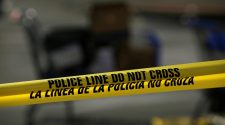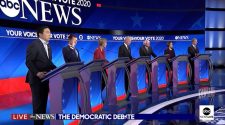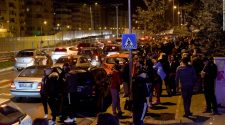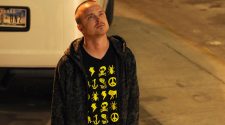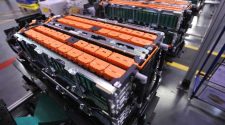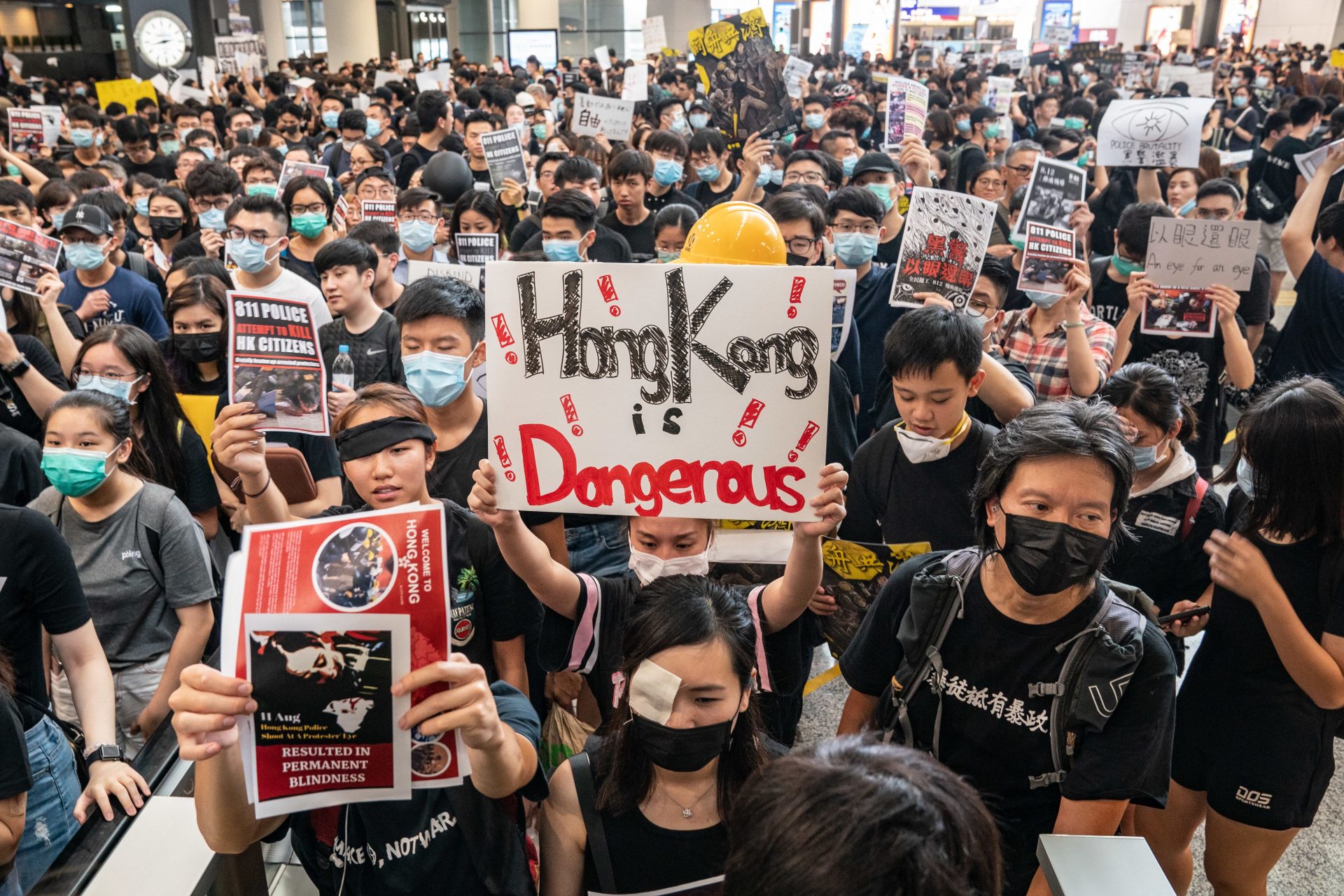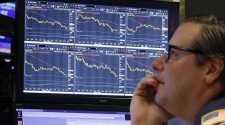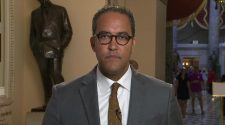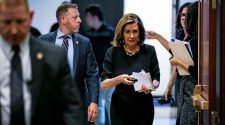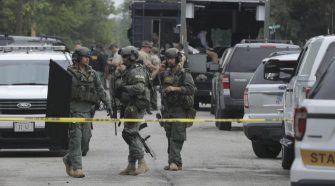Protesters occupy the arrival hall of the Hong Kong International Airport during a demonstration on August 12, 2019 in Hong Kong, China.
Anthony Kwan | Getty Images
Chinese propaganda outlets warned on Tuesday that protesters in Hong Kong are “asking for self-destruction,” as they released a video showing military vehicles amassing near the border of the city.
Meanwhile, the city’s embattled leader, Carrie Lam, told the news media on Tuesday that “lawbreaking activities in the name of freedom” were damaging the rule of law and that the Asian financial hub’s recovery from anti-government protests could take a long time.
Her comments came after Beijing said widespread anti-government protests in the semi-autonomous city showed “sprouts of terrorism,” and such violence must be severely punished, “without leniency, without mercy.”
Hong Kong’s airport reopened Tuesday early morning after airport authorities canceled all flights on Monday, blaming demonstrators’ disruption to regular operations. Another sit-in is expected to take place at the airport, a major global hub, on Tuesday.
Despite that reopening, Hong Kong flag carrier Cathay Pacific said it had cancelled over 200 flights to and out of the airport for the day, according to its website.
The protest at the airport, while disruptive, was largely peaceful. That’s in contrast to Sunday night, where protesters appeared to have thrown Molotov cocktails at police stations around the city and dozens of protesters were arrested.
Beijing’s clear message
On Monday, Chinese officials focused on what they described as “deranged acts” by the protesters, including throwing gasoline bombs, saying they marked the emergence of terrorism in the Chinese city.
“Radical Hong Kong protesters have repeatedly used extremely dangerous tools to attack police officers,” Yang Guang, a spokesman for the Chinese government’s Hong Kong and Macau Affairs Office, said in a news briefing on Monday, according to Chinese state broadcaster CCTV.
China’s media is sending a clear signal to the protesters.
On Monday afternoon, Chinese state-owned English tabloid the Global Times tweeted a video showing the People’s Armed Police assembling in Shenzhen, a city bordering Hong Kong, about a 1.5 hour- drive away.
The People’s Daily, the official newspaper of China’s Communist Party, posted on Chinese social media a statement saying the People’s Armed Police are in Shenzhen prepared to handle “riots, disturbance, major violence and crime and terrorism-related social security issues.”
In a Tuesday social media post from the Global Times‘ Chinese edition, the outlet said “if Hong Kong rioters cannot read the signal of having armed police gathering in Shenzhen, then they are asking for self-destruction,” according to a CNBC translation.
China is “implying they might send in the People’s Liberation Army or issue direct intervention but they don’t want to,” according to Ben Bland, a director at Sydney-based policy think tank Lowy Institute.
“(Beijing) hopes that the signals will scare protesters to back down,” but if and when Beijing decides to deploy troops they will not “advertise it,” he told CNBC. This is all part of a “delicate dance between China and Hong Kong” that’s reached a critical point because there is almost no common ground or overlapping interests between the protesters and Beijing, Bland added.
Although China’s leaders do not want to deploy the PLA, they are “willing to do it if they have to,” the Asia politics expert said.
Protests continue
On Monday Hong Kong’s airport halted all outbound flights, citing disruptions from a sit-in by protesters that had begun on Friday morning. The ongoing demonstrations in Hong Kong — a former British colony that was returned to Chinese rule in 1997 — have frequently hobbled its transportation system. What started as peaceful rallies against a single proposed law have snowballed into a wider pro-democracy movement, with some even demanding full autonomy from Beijing and occasional outbreaks of violence.
According to Bland, it has become more apparent in the last few weeks that Hong Kong’s government is “increasingly only operating on direct instruction or consultation with Beijing,” and acting more like a mainland Chinese regional government since Lam’s push to enact a law allowing extraditions to the mainland — the original impetus for the protests.
Many Hong Kongers reject such coordination on the basis of the “one country, two systems” principle that was promised to the city after the handover from the British. That concept was proposed when the former British colony was reunited with the mainland, and guarantees that the city would maintain a separate economic and legal system.
In essence, the ongoing movement is a fight to protect Hong Kongers’ “political identity” as much as it is specifically focused on furthering democracy in the city, Bland said, explaining that it constitutes a demand for self governance and a fairer economy.
For now, the city is bracing for more protests. That includes another airport demonstration that’s reportedly set to kick off on Tuesday afternoon.
Hong Kong International Airport is one of the world’s busiest transportation hubs in the world, it is the eighth-busiest airport in the world and handles over 72 million passengers a year, according to the latest statistics by Airports Council International.
— Reuters and CNBC’s Matt Clinch contributed to this report.

